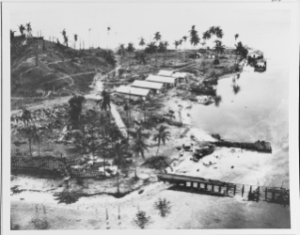The first Allied counteroffensive, Operation Watchtower, in the Pacific was launched on August 7, 1942. Sixteen thousand American troops landed on the island of Guadalcanal in the Solomon Islands. The amphibious landing took advantage of Higgins Boats made in New Orleans. The allies sustained major casualties, including the sinking of four Allied heavy cruisers—the Quincy, Astoria, Vincennes, and the Australian Canberra. Within two weeks the island's airfield was under allied control, but the Japanese could not be completely removed from the island.
The capture of the Guadalcanal airfield disrupted the Japanese efforts to close off Australia and New Zealand from their trade routes. The battle for Guadalcanal and the surrounding islands raged for six months and included seven major naval battles, hand-to-hand combat ashore, and almost continuous air coverage. All organized resistance on Guadalcanal ended on February 9, 1943, at 4:25 pm. The Solomon Islands Campaign cost the Allies approximately 7,100 men, 29 ships, and 615 aircraft. The Japanese lost 31,000 men, 38 ships, and 683 aircraft. However, the victory was an important step in the Allies' Island-Hopping Strategy in the Pacific.
Guadalcanal, Tarawa and Beyond




Add a comment to: Gudalcanal: Remembering the Battle on Its 75th Anniversary